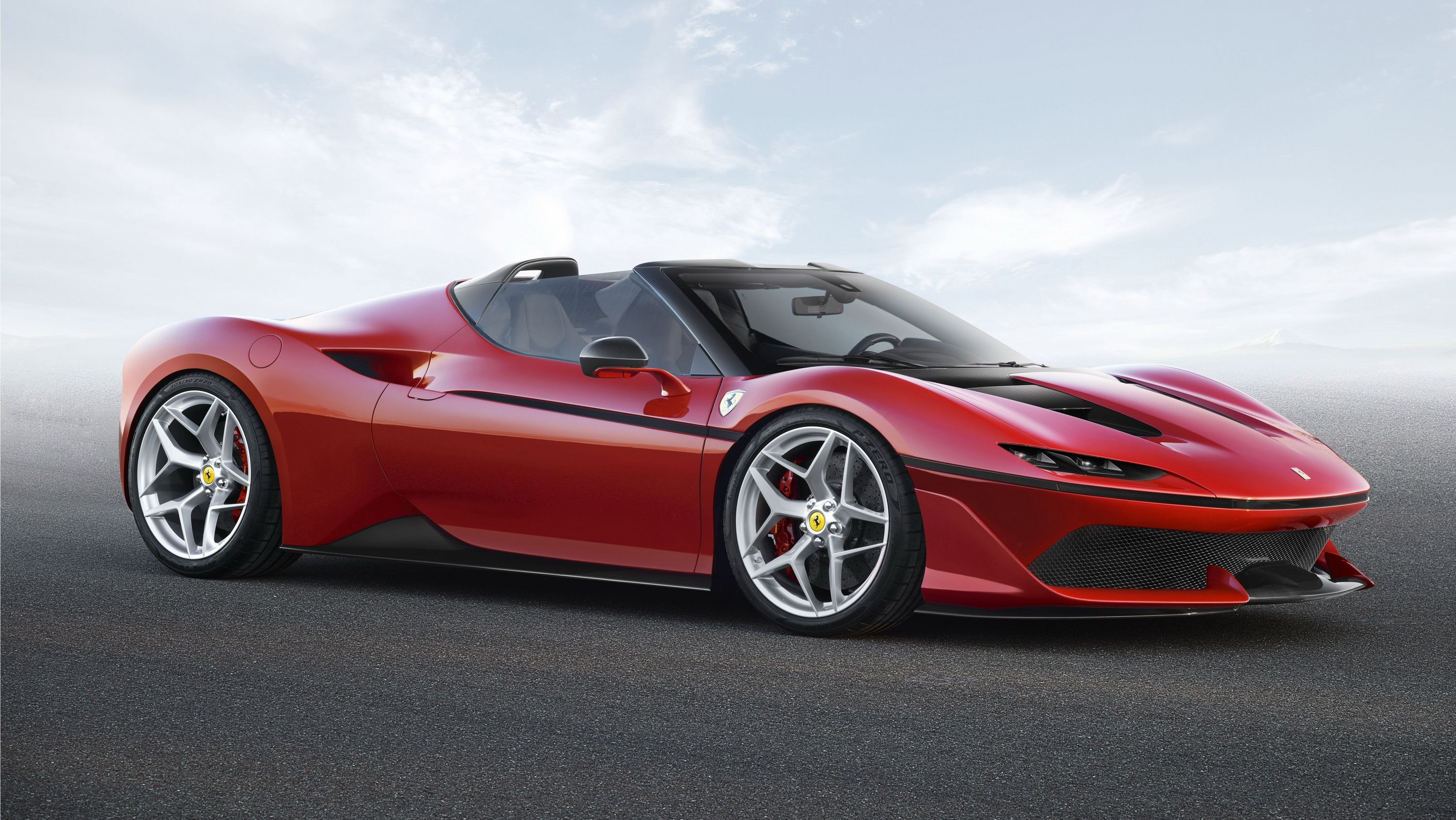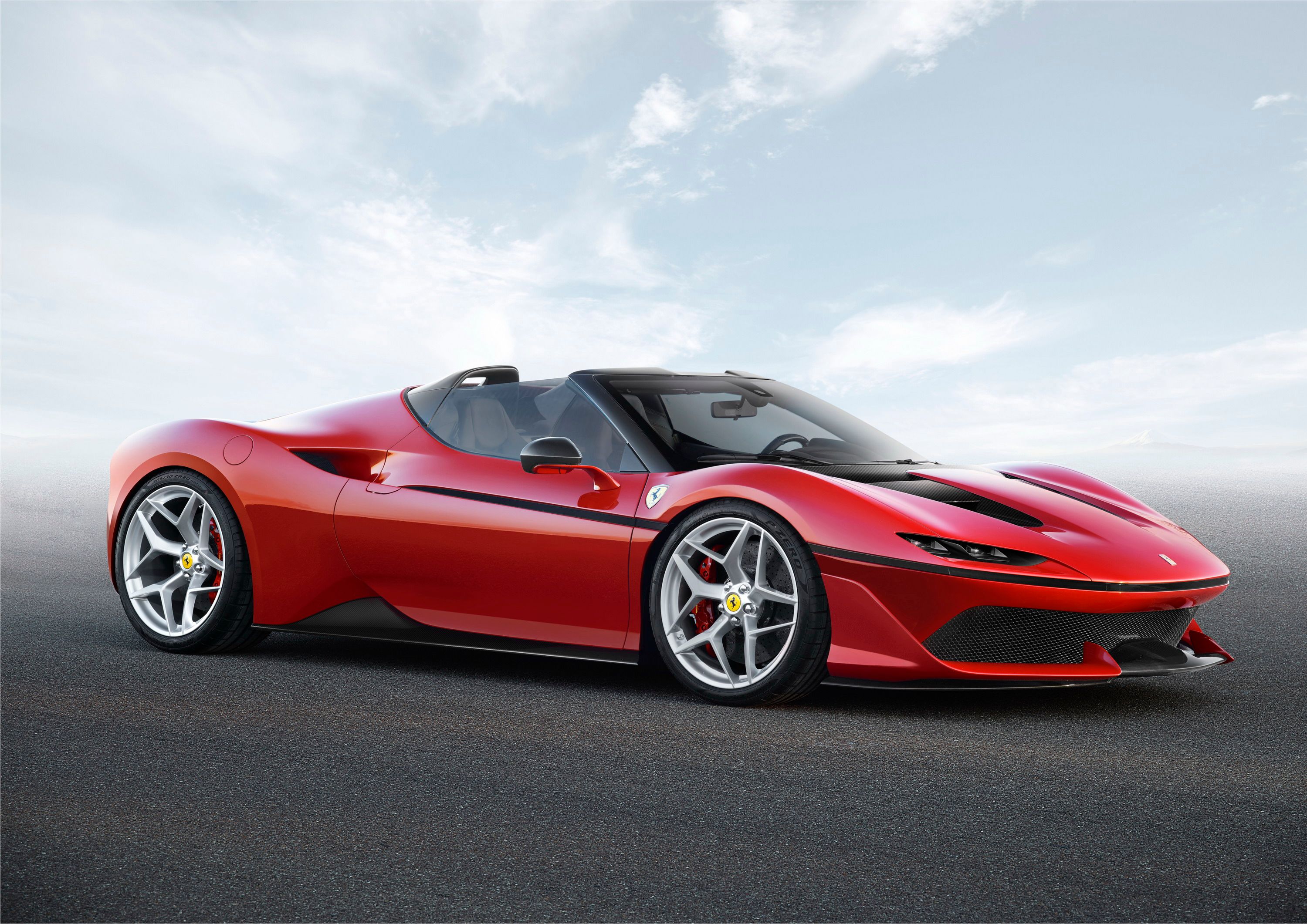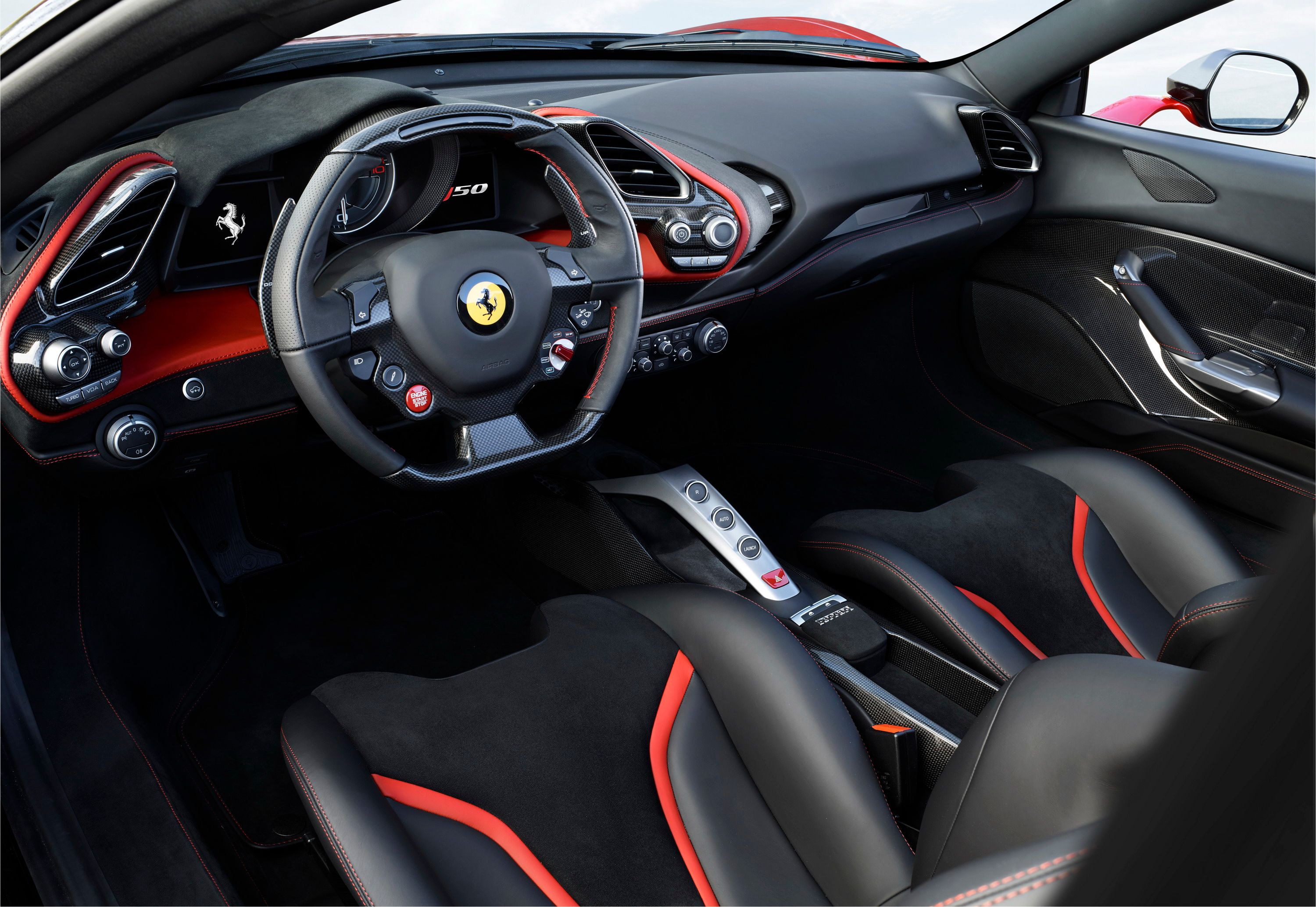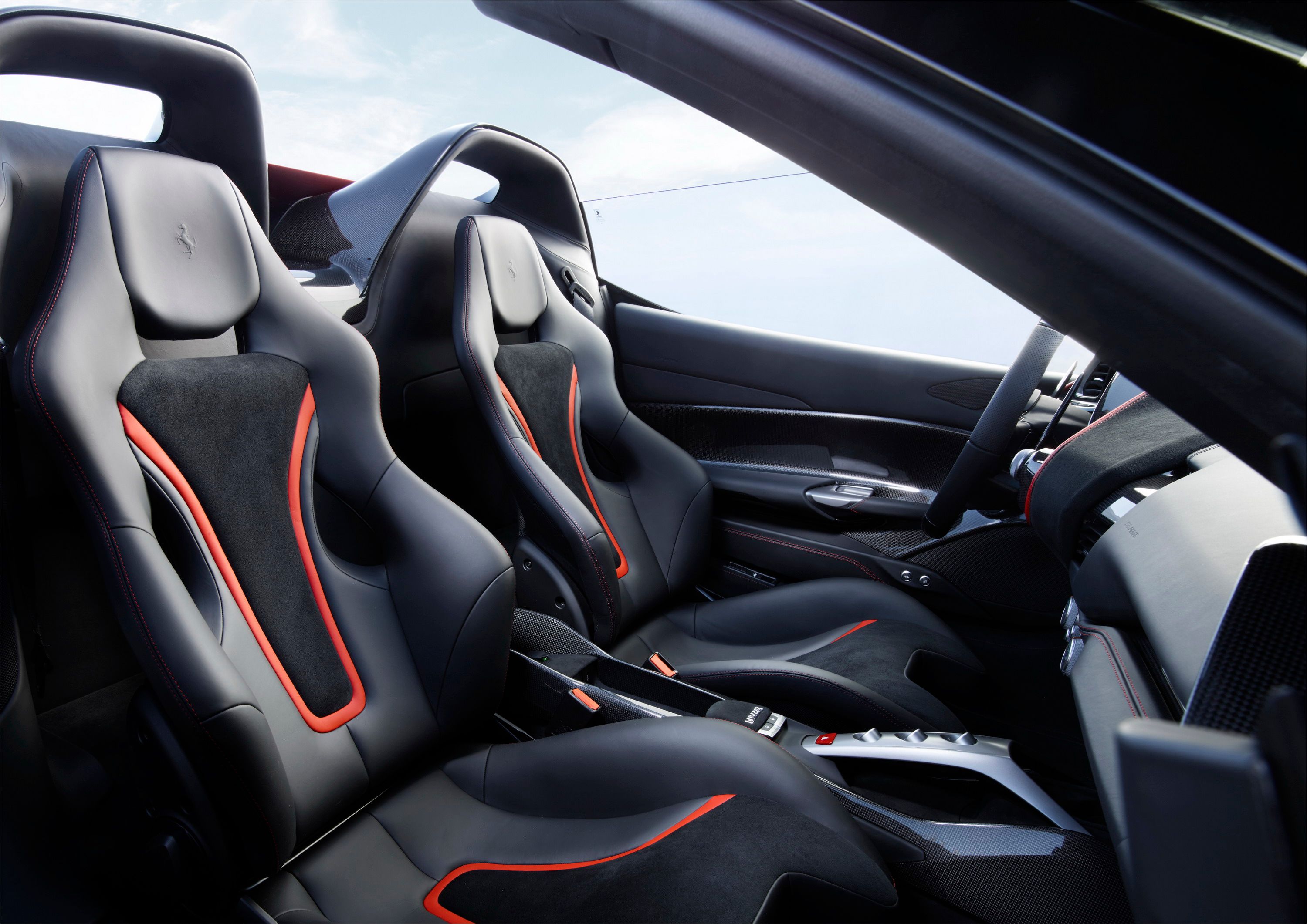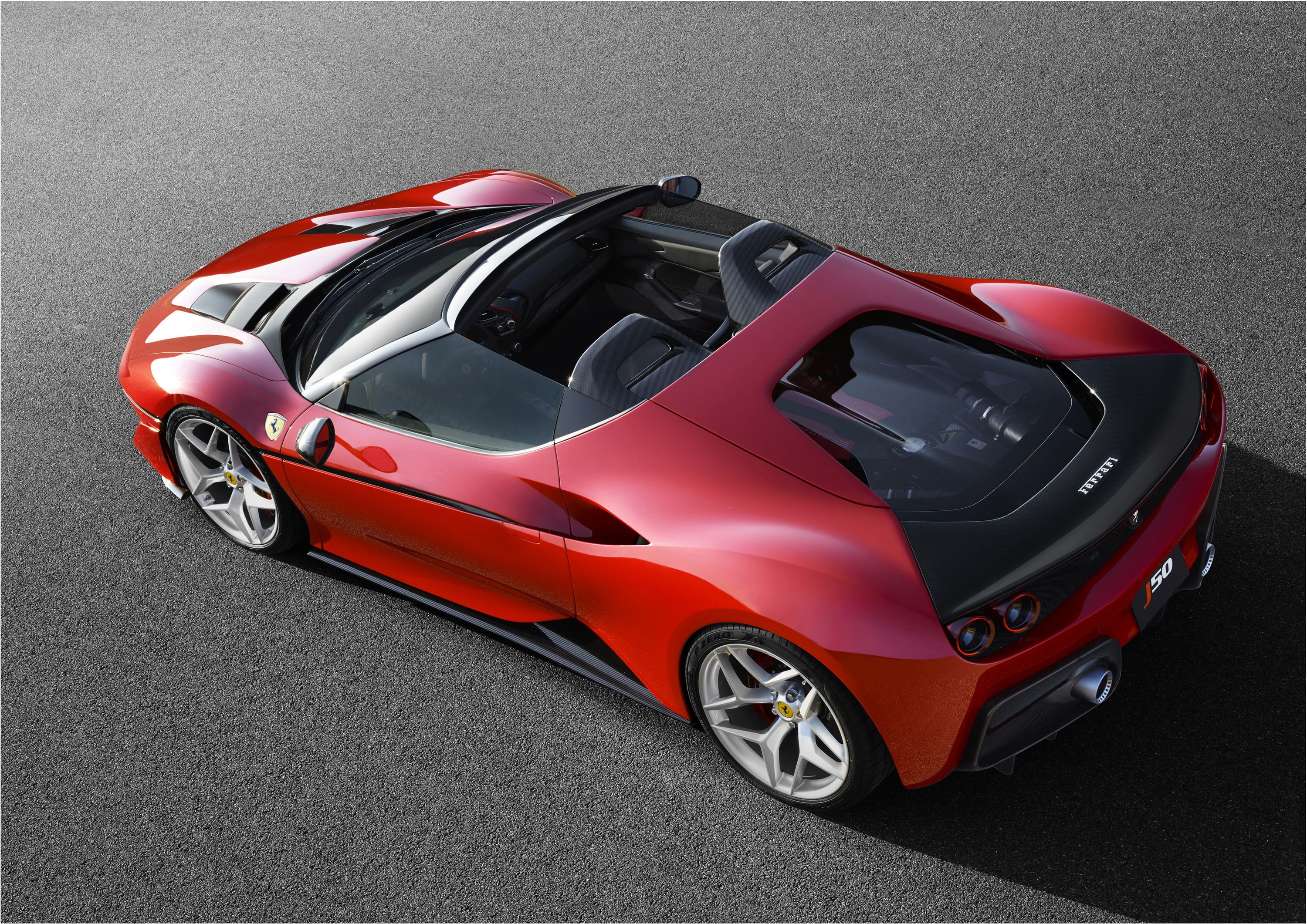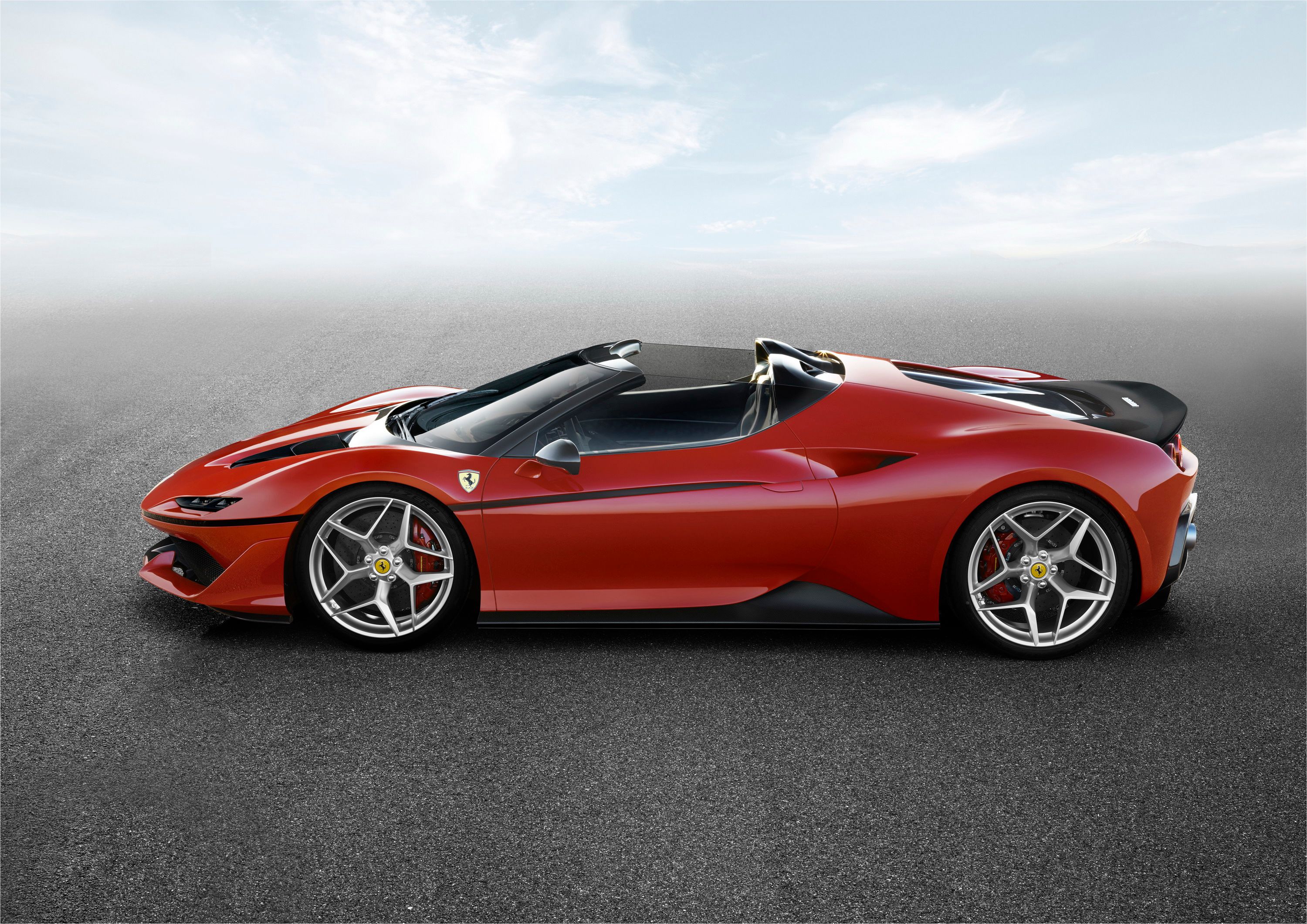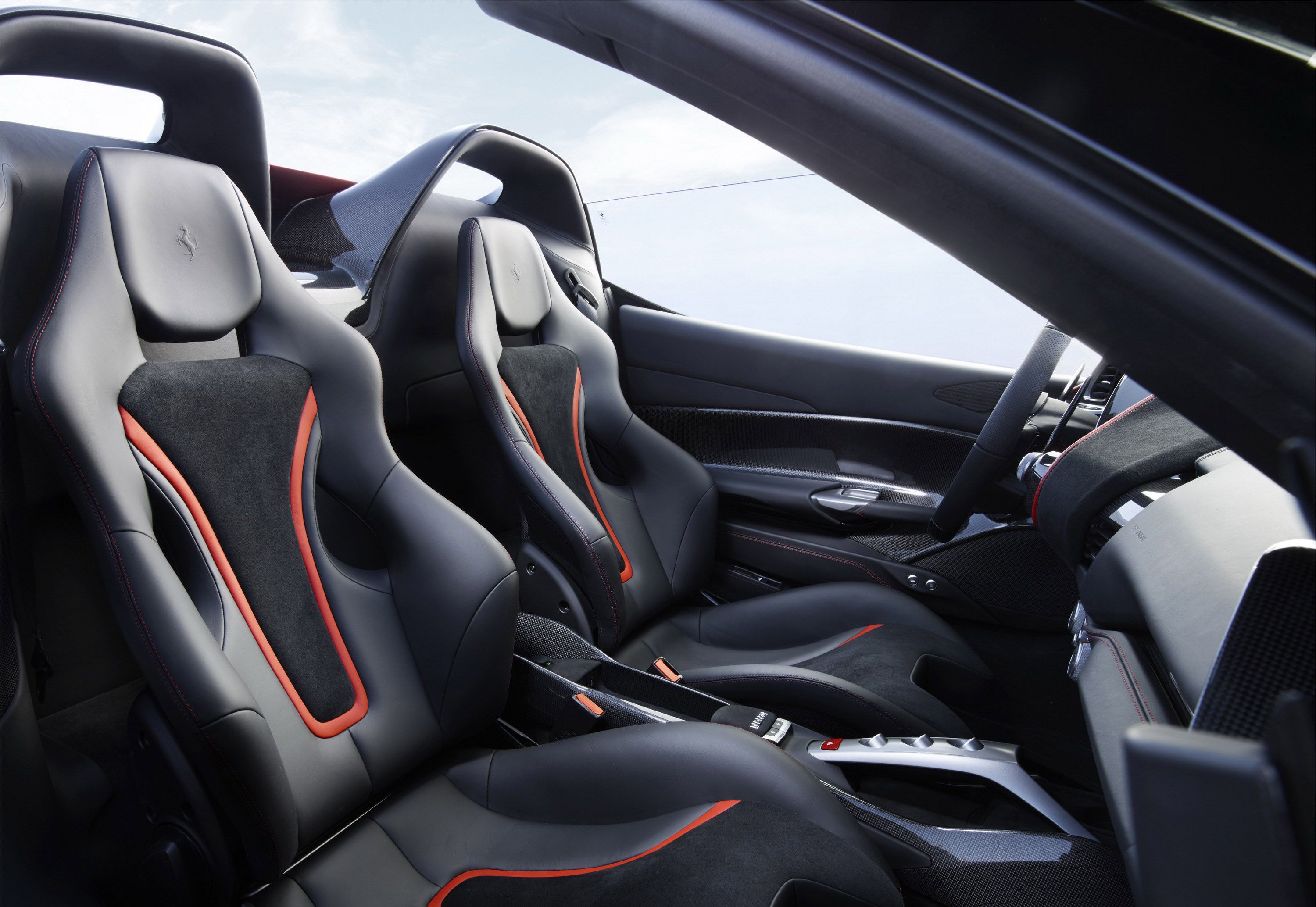Introduced in 2015, the Ferrari 488 GTB replaced the 458 Italia as the company's entry-level supercar. On top of bringing a revised styling language to the market, the 488 also marks the beginning of new era for Ferrari's most affordable sports car, with the naturally aspirated 4.5-liter V-12 being replaced by a twin-turbo, 3.9-liter V-8. A convertible Spider version was released at the 2015 Frankfurt Motor Show, while the 488 GTE and GT3 were launched to enable the nameplate to race in various events and series' around the world. In late 2016, Ferrari presented the first-ever bespoke supercar based on the 488. It goes by the name J50 and it is based on the Spider model.
Launched during a special celebration at the National Art Center in Tokyo, the J50 commemorates the 50th anniversary of Ferrari in Japan. Created by Ferrari’s Special Projects department and designed by the Ferrari Styling Centre team in Maranello, it also marks the return of the targa body style, paying tribute to popular Ferraris of the 1970s and 1980s. If you're not familiar with them, check out the Ferrari 308 and 328 GTS, but examples also include more recent cars such as the 348 GTS and F355 GTS.
To be sold in Japan only, the J50 is will be limited to only 10 units and each one will be tailored specifically to the customer’s requirements.
Continue reading to learn more about the Ferrari J50.
2017 Ferrari J50
- Make: Array
- Model: 2017 Ferrari J50
- [do not use] Vehicle Model: Array
What makes the Ferrari J50 special
Although most mainstream cars that are specifically developed for a country don't get more than special colors and wheels, the J50 is a different kind of limited-edition vehicle, featuring a significantly redesigned exterior. Up front, the J50 has very little in common with eh 488 Spider aside from the overall proportions and the pointy nose. the vertically oriented headlamps have been replaced by slim, horizontal units, while the standard bumper was redesigned to include a massive mesh grille and an aggressive splitter. The front hood section has been lowered at the center, making the raised wheel arches stand out even more. It also gained two carbon-fiber air channels that pay tribute to race-spec Ferraris.
Drastic changes are visible onto the sides too. For starters, Ferrari thought it's a good idea to redesign the car's beltline, eliminate the big "dent" around the door handle, as well as downsize the two-tier intake in the rear fender. This makes the car's profile look cleaner, but at the same time it enhances the rear haunches, giving the J50 a more aggressive stance. Also, the black trim that comes with the new character line (also visible around the nose) reminds me of classic Ferraris such as the Berlinetta Boxer, which is really cool. Other changes in this area include black side skirts, redesigned LaFerrari-style mirrors, and unique 20-inch wheels.
The rear end also received a massive amount of modifications. The most obvious is the revised fascia and the quad taillight configuration. There's a new spoiler too, as well as a redesigned diffuser with an extractor shape inspired by jet engine afterburners. The engine lid is completely new as well, featuring a large, transparent polycarbonate cover which is shaped to provide a visual extension of the two separate rollover hoops protecting the heads of driver and passenger. While most of the lid is finished in the same color as the body, the area closest to the fascia is painted black in order to match the spoiler and the mesh between the taillights.
All told, the J50 looks like Ferrari launched a facelifted 488 a few years earlier than planned...
Changes aren't as radical inside the cabin, but Maranello crafted a new upholstery for the seats, as well as new trim on the dashboard and door panels. The model showcased here features a red-over-black interior trimmed in fine leather and Alcantara, but customers can opt for just about any color combination out there. The carbon-fiber hard targa top, which matches the rollover hoops, is divided into two pieces which stow conveniently behind the seats.
Under the hood is where Ferrari left things unaltered as far as the 488 Spider's drivetrain goes, but the turbocharged, 3.9-liter V-8 did receive a mild upgrade. Specifically, the unit now cranks out 681 horsepower, a 21-horsepower increase over the standard model. Torque remained unchanged at 560 pound-feet. The mill enables the 488 Spider to hit 60 mph in three seconds and 124 mph in 8.3 clicks, the same as the coupe version. Top speed is rated at 203 mph versus the 488 GTB's 205-mph estimate. Ferrari had nothing to say about the J50's performance, but it's safe to assume that the extra oomph and revised aerodynamics could shave a tenth-second off the 0-to-60 mph sprint..
There's no word on pricing either, but considering the extensive modifications and the exclusivity of a ten-unit run, the J50 should be a lot more expensive than the 488 Spider, which retails from around $275,000. My best guess is that each example will fetch in excess of $450,000 before options. And, if several bespoke models from the past are any indication, the J50 is probably already sold out.

